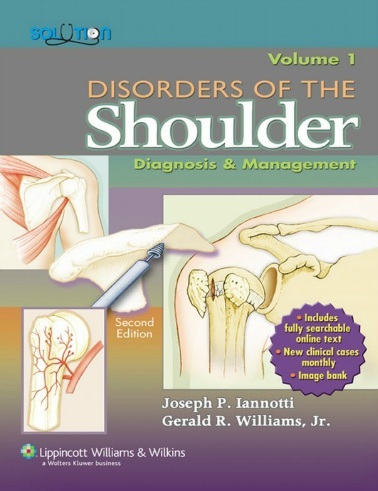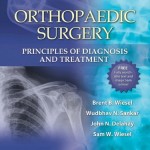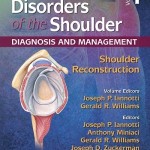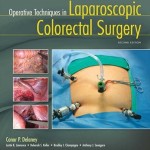 By
By
- Joseph P. Iannotti
- Gerald R Williams, Jr.
Now includes a brand-new companion Website, The Iannotti & Williams Solution!
Expanded to two volumes, Disorders of the Shoulder, Second Edition is a comprehensive, current, and authoritative clinical reference for residents, fellows, shoulder specialists, and general orthopaedic surgeons. This edition features greatly expanded coverage of arthroscopic treatment and hundreds of new full-color arthroscopic images. Arthroscopic and open techniques are integrated into all relevant disorder-specific chapters, so that readers can compare open to arthroscopic procedures and select the most effective treatment option. New chapters cover diagnosis of glenohumeral instability; management of bone and soft tissue loss in revision arthroplasty; minimally invasive techniques for proximal humeral fractures; hemiarthroplasty for proximal humeral fractures; and suprascapular and axillary nerve injuries.
All clinical chapters include treatment algorithms and the authors’ preferred treatment. More than 2,400 illustrations—743 in full color—complement the text.
The new companion Website, The Iannotti & Williams Solution, gives you instant access to the fully searchable text, an Image Bank, featured clinical cases, and the Gaining Speed and Tricks of the Trade chapter of Burkhart’s View of the Shoulder: A Cowboy’s Guide to Advanced Shoulder Arthroscopy.
Key Features
- Expanded into two volumes
- Expanded arthroscopic coverage
- Arthroscopic and open techniques integrated into disorder-specific chapters, so surgeons can compare arthroscopic and open treatment options
- Full-color arthroscopic images
- New chapters cover
- Diagnosis of glenohumeral instability
- Techniques for revision arthroplasty: management of bone and soft tissue loss
- Minimally invasive techniques for proximal humeral fractures
- Hemiarthroplasty for proximal humeral fractures
- Suprascapular and axillary nerve injuries
- Practical organization by anatomic region
- Edited by leading experts in shoulder surgery
- Treatment algorithms and authors’ preferred treatment in all clinical chapters











